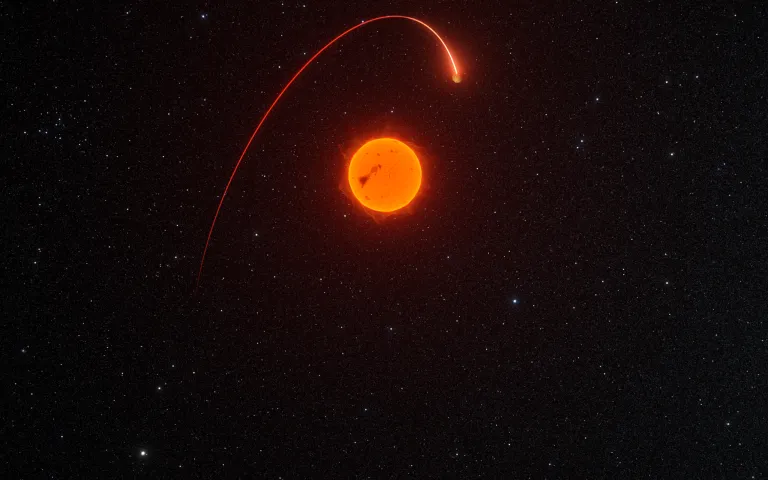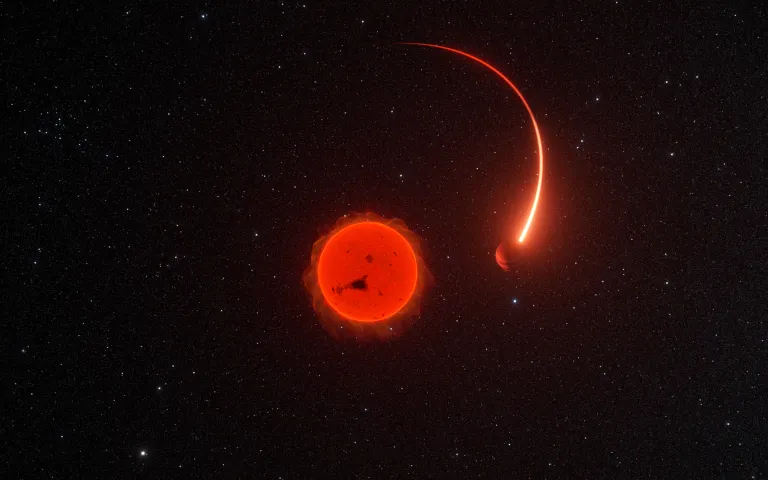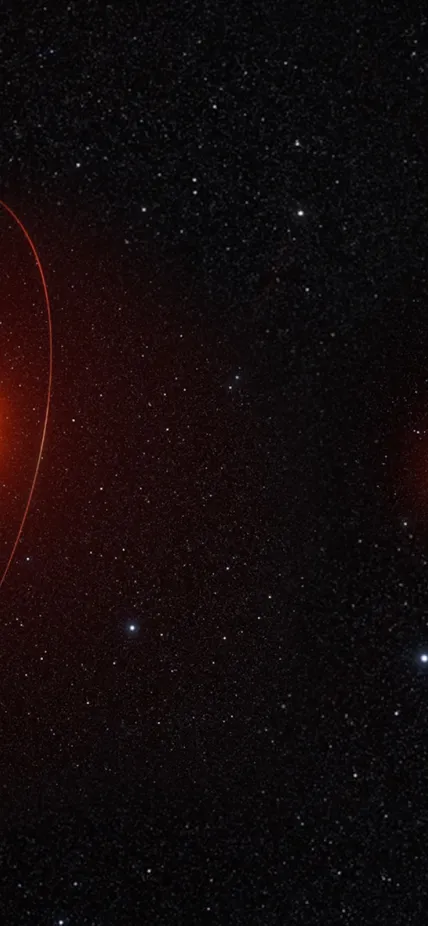Washington, DC— The European Space Agency’s Gaia spacecraft has discovered a massive planet and a brown dwarf orbiting a low-mass star. The space telescope’s observation was confirmed by an international team of astronomers led by the University of Amsterdam’s Guðmundur Stefánsson and including Carnegie Science’s Shubham Kanodia.
Their findings, which will help astronomers understand the formation and evolution of such unusual planetary systems, are accepted for publication in The Astrophysical Journal.
The planet, called Gaia 4b, is one of the most-massive known to orbit a low-mass star. It has a mass 12 times that of Jupiter and an orbit takes 570 days. It was found using a method called astrometry, which detects the minute “wobble” in the position of the star caused by the pull of the planet’s gravity.

“Although the star’s gravity is greater than the planet’s—keeping it in orbit—the planet’s mass does exert a gravitational force on the star as well, and this little tug is detectable by astronomers,” Kanodia explained.
Gaia 4b is the first planet detected by Gaia using this method that has been confirmed by ground-based telescopes. With its exquisite precision, Gaia is expected to be able to detect thousands of exoplanets around nearby stars.
A recent release of Gaia data enabled astronomers to identify a list of stars that appeared to be experiencing the tug exerted by an orbiting exoplanet’s gravity.
“However, the motion of these stars is not necessarily due to a planet,” said lead author Stefánsson. He explained that what looks like a star might be “a pair of stars that are too close together for Gaia to recognize them as separate objects. The tiny shifts in position that appear to be due to a planet might actually result from the nearly perfect cancellation of the larger shifts in position of the two stars.”
To separate the genuine planets from other objects that look similar to Gaia’s “eyes,” the team took data from three ground-based facilities: the Habitable-zone Planet Finder (HPF) on the 10m Hobby Eberly Telescope at McDonald Observatory in Texas, the NEID spectrograph on the WIYN 3.5m Telescope at Kitt Peak Observatory in Arizona, and the FIES Spectrograph on the 2.6m Nordic Optical Telescope at La Palma in the Canary Islands.

They were able to confirm the existence of Gaia 4b and a brown dwarf, called Gaia 5b, which has a mass of 21 times Jupiter’s and an eccentric 358-day orbit around its host star, which has just 34 percent of the Sun’s mass.
Smaller than stars, but bigger than giant planets, brown dwarfs are sometimes called “failed stars,” because they are not capable of sustaining hydrogen fusion.
Kanodia has a longstanding interest in unusual planetary systems such as this one, in which small host stars are orbited by large planets and other objects, which he is pursuing through Giant Exoplanets around M-dwarf Stars (GEMS) collaborations as well. These unexpected arrangements challenge what astronomers thought they knew about the planet formation process.
“I’m fascinated by solar systems that seem like they shouldn’t be able to exist,” Kanodia said. “How do these large objects manage to form around such small stars and sustain their orbits without crashing into the star? I’m eager to continue looking for such objects using Gaia, JWST, and other facilities.”
